The announcements have rolled out at a startling pace, from Oregon to Maryland and everywhere in between. Around the United States, community college presidents are retiring.
In some ways, the departures have been expected. The American Association of Community Colleges and others have calculated that the sector would be affected by acute leadership turnover around this time.
Still, news of the retirements has been jarring. The departing presidents represent decades of leadership at community colleges. They have built campuses, managed crises and ushered in a new era of online learning in emergency circumstances. They have nudged the primary mission of the sector from access to student success, owned the workforce development space and established equity as a foremost tenet.
Below, seven retiring leaders (in alphabetical order) share insights from their careers in interviews with Community College Daily.
* * *
Bryan Albrecht
Gateway Technical College, Kenosha, Wisconsin
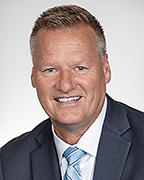
The way Bryan Albrecht sees it, the mission to train skilled workers is baked into the DNA of Gateway Technical College, the southeastern Wisconsin school he has served for 16 years as president.
“We’ve been focused since 1911 on the important role that workforce development plays in building a local economy,” he says. “It has evolved and changed over time. But today, like in 1911, when Gateway was founded, we find ourselves in a position of not having enough skilled workers to meet the demands of our own region.”
Training those workers has become ever more complex, with digital platforms, automated manufacturing and artificial intelligence.
“While 20 years ago we could teach software programs independently, now we’ve got to teach them embedded into an occupational industry cluster,” Albrecht says.
The key to keeping up with the changes lies with the faculty, he says. “They’ve got to have a passion for the career area or workforce area that they represent. They will put in the extra time and effort to stay current with the trends in their industry if you allow them to do that.”
Albrecht sees his role as “trying to open more doors of opportunity.” That means meeting with employers and leaders in the community and talking not only about the needs of today but also five or more years down the road.
In August 2020, Gateway Tech was thrust into a different community role when a white police officer shot and critically wounded a 29-year-old Black man, Jacob Blake, three blocks from Gateway’s Kenosha campus. Multiple nights of protests and rioting followed.
Gateway Tech responded by scheduling listening sessions both for the college and the broader community. Albrecht named a vice president of diversity, equity and inclusion to lead the discussions, which came to be called “crucial conversations.” They’re still taking place weekly, two years later.
“My process for Gateway is, we will always be a reflection of our community,” Albrecht says. “So we can either sit back…or we can be a reflection of bringing people together and healing. I think we play a role in becoming a part of the community as well as an educational institution within the community.”
Casey Crabill
Onondaga Community College, Syracuse, New York
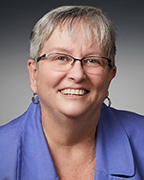
Casey Crabill was leading a California community college about 20 years ago when she learned about a student living in a tent on her campus. She thinks about that student now as community colleges scramble to help students with basic necessities.
“I’ve really been wondering whether they have more needs now or we see it more,” says Crabill, who is retiring after a lifelong career in education concluding with nine years as president at Onondaga Community College in upstate New York.
“I’m not sure we were paying attention to the kinds of non-academic challenges that were always in the way of our students the way we’re paying attention to them now,” she says.
Regardless, student needs are front and center, and Crabill says that’s changed many aspects of her job as a leader.
“I think it changes the way you speak to donors,” she says, “most of whom didn’t go to a community college, and most of whom don’t know people who struggle financially.”
After decades of fundraising, Crabill has found that donors respond enthusiastically to appeals for program support. And there’s usually a well-defined path to raise money for capital projects.
“But there aren’t places to go to get extra money for babysitters, or car batteries, or to pay someone’s electric bill,” she says. “All those little barriers can add up to a whole lot of failure.”
But responding to challenges and working with people is part of a community college leader’s job, Crabill says.
“That’s the coolest part of the job,” she says. “It’s about making all those pieces fit, whether those pieces are inside the institution or outside the institution so that people can build the kind of life they imagine.”
Frank Friedman
Piedmont Virginia Community College, Charlottesville, Virginia
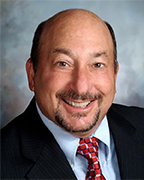
Piedmont Virginia Community College (PVCC) enjoyed a glorious evening early in March 2020. Nearly 500 people packed the college’s theater, with the Richmond Ballet on stage. The next day, after a faculty and staff meeting, the college went to remote learning.
For Frank Friedman, who served as the college president for 23 years before retiring on July 1, the coronavirus pandemic became the greatest challenge of his career.
For several years prior, PVCC was laser-focused on student success. “Quite honestly, our open door had become a revolving door for too many students, and they were not completing credentials,” Friedman says.
Staff and faculty dug into data, organized listening sessions and convened a task force to come up with a plan. Part of that plan was to get students more engaged on campus.
“We really focused on having the student not just drive in, go to class, drive home,” Friedman says.
The college encouraged students to spend time on campus studying and interacting with faculty and one another. It started more clubs and promoted them.
“We felt that student engagement would help them focus on their own goals and student success,” Friedman says. “And that was one of the areas where we made tremendous progress, and then it all came to a halt with the pandemic.”
It will fall to his successor to fully recapture that student engagement, Friedman says. “And that’s going to be a great challenge. You know, for many of our students, going to high school meant staying in their bedrooms. How are we going to break that cycle?”
Friedman, who has worked in community colleges since 1977, says successful schools remain true to their mission.
“What I love about community colleges, among many things, is that they are mission-focused,” he says. “I always say about PVCC, we know what our job is and every person is focused on it. We know that we are here to make education accessible and to help students succeed. And that’s why we exist.”
Alex Johnson
Cuyahoga Community College, Cleveland, Ohio
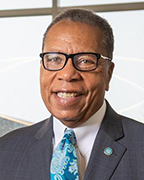
Twice in a career that spanned 40 years in higher education, Alex Johnson has led community colleges through cataclysmic events.
He was chancellor of Delgado Community College in New Orleans when flooding from Hurricane Katrina swamped that city in 2005. Nearly all of the buildings at the college’s main location were damaged or destroyed. Students, faculty and staff scattered far and wide.
Fifteen years later, Johnson, by this time president of Cuyahoga Community College (Tri-C) in Cleveland, shut down his campuses in response to Covid. His buildings were intact, but college life as students had known it was in tatters.
Both times Johnson acted quickly. In Louisiana, he established channels of communication, signed some students up for online courses and helped others enroll at different colleges. In Cleveland, he moved “at warp speed” to virtual learning.
A crisis, says Johnson, who is leaving Tri-C after eight years as its leader, is “an opportunity to respond to a challenge and also to advance the institution.”
Leaders must cut through the chaos and focus on the task at hand, he says, which is making sure students get the education they need to thrive in a precarious world.
“What you have to do is really look inward at the institution to identify those stalwart individuals who are committed to responding to these challenges,” Johnson says. “You identify them by their courage, their fortitude and their ability to relate to individuals at a meaningful level.”
Once leaders have identified the mission and the people best suited to carry it out, the next step is to seek financial and other resources, Johnson says.
“And then the last piece is to ensure that this effort is ongoing and you build upon it in a way that helps you understand what it might look like at the end of the experience.”
Tri-C has not yet reached the end of the pandemic experience, but to Johnson it’s clear that the role of a community college has changed.
“When I first arrived here, ‘wraparound services’ was something that we applied only to a small number of the students,” he says. “More students are in need of those supportive services — to overcome food insecurity, to overcome housing needs, to overcome transportation needs, to overcome needs like childcare.”
Tri-C has met those needs by partnering with nonprofits. They put food banks on campuses and drew up plans for housing near the downtown Cleveland campus.
“In the past it’s been about student success, getting students into the workforce or a four-year institution,” Johnson says. “But now it’s much more complicated. It’s about wraparound services. It’s about working in the community.”
Mark Mitsui
Portland Community College, Portland, Oregon
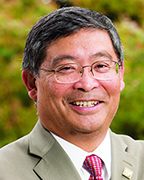
Throughout a career in education lasting more than 30 years, Mark Mitsui has been a tireless champion for immigrants and first-generation students.
“The pathway to a four-year degree for many of our immigrants is through the community college,” he says.
Among those immigrants are Asian Americans and Pacific Islanders (AAPI), a group that Mitsui says often gets overlooked because of what he calls the “model minority myth.” That’s the one, he says, that “posits that Asian Americans all go to Harvard and Yale, and we always win the science contests and spelling bees.”
In reality, the AAPI community is multifaceted. It includes families who arrived in the United States as refugees from places like Myanmar, and immigrants who made their way from Asian and Pacific Island nations to escape repression and abject poverty.
“Those students sometimes have very high high school dropout rates, and very low college completion rates,” said Mitsui, who is retiring after six years as president of Portland Community College (PCC) in Oregon.
While working as a vice president of student services at South Seattle College in Washington, Mitsui secured one of the first federal grants that designate colleges as AAPI-serving institutions and provide resources to help boost success rates for those groups. He went on to become president of North Seattle College and then deputy assistant secretary for community colleges in the U.S. Department of Education during President Barack Obama’s administration.
Community colleges today are at “an intersection of historic and contemporary issues,” Mitsui says.
About 60% of the students at PCC experience housing or food insecurity, or both, he says. “And that is related to the historic systemic racism in our country around the transfer of wealth between generations.”
PCC is working with other community colleges around Portland to create services and opportunities for students facing those obstacles.
“We think this is a down payment,” Mitsui says.
Going forward, community colleges must increase the “value proposition” of going to school, he says, which means helping with housing, childcare and transportation. Otherwise, students will forgo college for a booming job market.
“Here in Portland, the local car wash has signs for salaries starting at $21,” Mitsui says. “The opportunity cost of going to community college hasn’t been this high for many, many years.”
Maureen Murphy
College of Southern Maryland, La Plata, Maryland
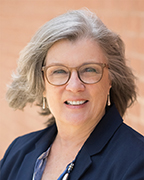
Perhaps better than many leaders, Maureen Murphy understands the angst of the ambivalent high school graduate. She tried college as a theater major, quickly washed out and didn’t obtain her bachelor’s degree for 13 years.
Fast forward an additional 10 years, and Murphy, now with children and a doctorate in American studies, decided to help finance a home improvement project by teaching some community college classes. She’s been in love with the sector ever since, and will retire December 31 after 15 years as a community college president, the last five at the College of Southern Maryland.
“We are democracy’s colleges,” Murphy says. “We are here for everybody, which is really important. And what it means to be here for everybody now is very different from the early days.”
Community colleges have always focused on access and helping students improve their lives and the lives of their families, Murphy says. But the goal of providing post-high school education to students from all walks of life has vastly expanded.
“Now we have folks who really need us because the jobs that are out there take a whole different skill set,” Murphy says. “We see the rejection of degrees and the rise of micro-credentials and different kinds of workforce credentials. Stacking things, packaging things differently, competency-based learning — these are really important and profound initiatives that I think are going to change not just the face of the workforce, but education.”
For years, Murphy says, community colleges “flew under the radar.”
“We just kept doing good work and we were really happy about it,” she says. “Now, elected officials pay attention to us in a way they hadn’t before. And that’s positive and negative.”
“We’re kind of getting caught a little bit in some of the tensions that the four-year sector has seen for a long time,” Murphy explains. “Some colleges are seeing issues around free speech. I think it’s because there’s more attention paid to us that these things are starting to creep into our hallways.”
She has no doubt that community colleges will handle the challenges.
“I’m optimistic,” Murphy says. “We’ve got young leaders coming along to keep the fight going because our colleges are too important to fail.”
Christine Sobek
Waubonsee Community College, Sugar Grove, Illinois
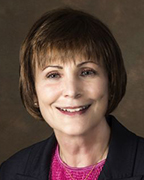
In her 21 years as president of Waubonsee Community College in Illinois, Christine Sobek has seen the college expand from two campuses to four. Five new buildings have sprung up on the main campus, and student scholarship funds have multiplied by 300%
Now, looking toward retirement at the end of 2022, Sobek is working on a new challenge. She calls it “the art of leaving well.”
“There’s so much focus on the start of your leadership role as you’re starting the presidency,” she says. “There’s all these things like the first 100 days and what you should do. There’s not been a lot written about the last 100 days. I’ve asked my board, ‘I’ve got a certain amount of time left with the institution. What is the best use of my time? What can I do to best position the college to be welcoming and move forward with the next leader?’”
For community colleges overall, Sobek thinks the way forward involves a renewed focus on slightly older students who may have dropped out or stopped out during the pandemic. They have some college classes and credits, but no degree or credential.
“I think one of the number one things we could be doing better is to re-engage our adult learners,” she says. “I’m talking about individuals, roughly 25 years and older, who need retraining, need reskilling. That used to be a space that community colleges owned. We’ve got to figure out a way to engage and reconnect and get those adults back.”
For emerging leaders, Sobek shares some advice:
“One of my mantras is, ‘never get ahead of your board,’” Sobek says. “At the end of the day, the relationship between the president and the board is probably the most important thing that has to happen. If you’re not in sync with them and there isn’t good communication…it’s not going to work long term.”
After more than 40 years in community college administration, Sobek says she is as optimistic as ever about the future.
“I know our sector’s got challenges, but everybody in the world’s got challenges right now,” she says. “I still think the community college sector is the best sector of higher education to be in, hands down. And nothing in these many years that I’ve been in it has ever changed my view of that.”

